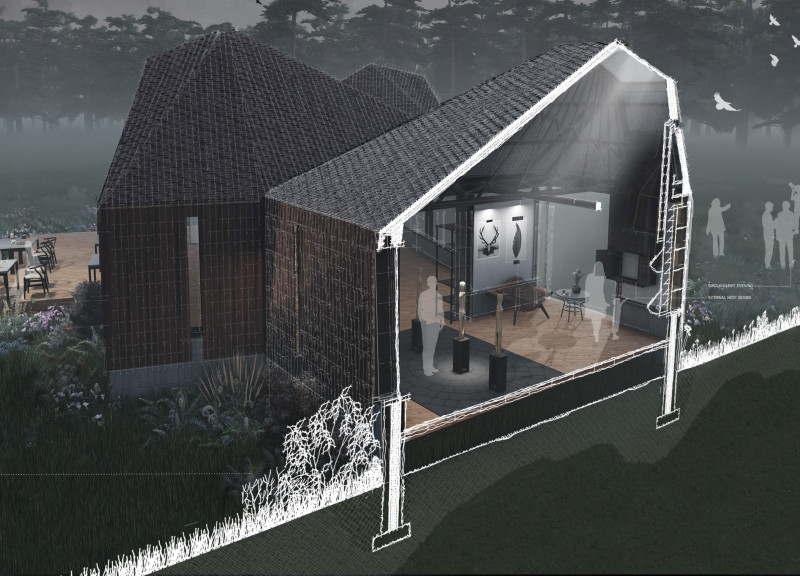5 key facts about this project
The KEMERI BOG VISITOR CENTRE, known as "THE NEST," is located in the tranquil woodland of Kemeri National Park. It serves as a starting point for visitors to learn about the park's rich natural and cultural offerings. The design embodies the idea of a 'nest,' suggesting safety and harmony with the surrounding environment, and it creates an inviting space for those looking to connect with nature.
Spatial Arrangement
The building is divided into four smaller units that reduce its overall size. This division allows the design to relate more closely to human scale. Each unit is carefully oriented to provide views of the landscape, enabling visitors to experience the beauty of the park from different perspectives as they explore the centre.
Material Selection
Construction includes a modular timber frame that supports a sustainable approach. Timber shingle cladding is used to protect the structure while blending with the natural surroundings. Plywood rainscreen adds durability and also ties the building visually to its forest environment, reinforcing the connection to nature.
Ecological Integration
Attention is given to local wildlife through features such as internal nest boxes for birds and the use of native plants in the surrounding landscape. This focus on ecology allows the visitor centre to play a role in conservation efforts and offers opportunities for visitors to learn about the importance of biodiversity in the park.
Incorporation of Natural Light
The design incorporates large windows and openings that invite natural light into the interior. This connection to the outside enhances the experience of being in the woods. Visitors can observe seasonal changes and wildlife from the comfort of the centre, creating an atmosphere that feels connected to the landscape beyond its walls.


























